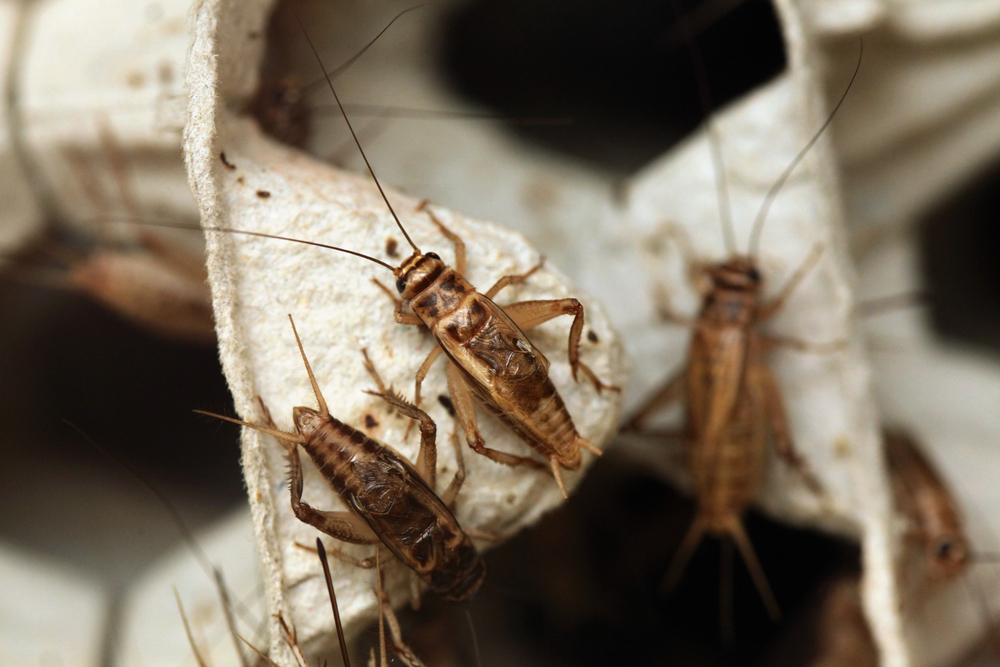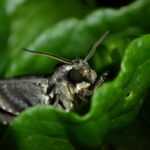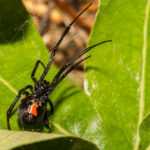Crickets: Fascinating Facts & Their Role in Ecosystems
Explore the fascinating world of crickets and discover their vital role in ecosystems. Learn intriguing facts that highlight their importance—read more!
Best Tips for Understanding and Managing Crickets
Crickets, known for their nocturnal chirping, can be intriguing yet problematic insects. This article offers a comprehensive guide to help you identify, understand, and manage various species. From their behavior to habitat preferences, you’ll find practical tips to keep these insects under control, whether they’re indoors or invading your yard.
These remarkable members of the family Gryllidae share close ties with grasshoppers and katydids. These leaping insects have long antennae, strong hind legs, and produce familiar chirping sounds that fill the night air. The chirping, produced by most males—including tree crickets and ground crickets—is not just background noise; it’s vital for communication. Males use it to attract females and establish territory among other males. Female individuals are drawn to the calling songs males produce, which starts courtship and mating behaviors.
With over 900 species worldwide, these insects vary in size, color, and behavior. Common types include house crickets, which often enter homes; field crickets that thrive in grassy outdoor spaces; and camel crickets, known for their arched backs and preference for damp environments. Whether you see them indoors or hear their calling song outside, these creatures play important roles in many ecosystems.
Introduction to Crickets
Members of the Gryllidae family are captivating insects closely related to grasshoppers and katydids. Known for their distinctive chirping, these leaping insects appear in fields, forests, and even inside houses. The world of these insects is diverse, with over 900 species ranging from house crickets to vibrant tree crickets and elusive ground crickets.
Male individuals are famous for producing melodic calls. They use their front wings to create sounds that attract females and signal other males. This chirping is more than background noise—it is vital for communication and mating. Whether you see a hopping insect across your lawn or hear their chorus at night, these creatures play important roles in ecosystems.
In this article, we explore the fascinating behaviors, communication methods, and unique traits that make these insects intriguing.
Insights on Crickets
- Identification relies on recognizing physical traits like body length, color, chirping, and wing structure.
- Understanding types and habitat preferences is key to effective management and targeted control.
- DIY control tips, such as sealing entry points and using traps, can help. However, professional pest control may be needed for severe infestations.
These insects are more than the background music of summer nights—they are vital ecosystem members and fascinating creatures. From house crickets that wander indoors to field, camel, ground, and tree crickets outdoors, each species has unique behaviors and benefits.
Male individuals’ chirping attracts females and supports survival and social structure. Knowing how to identify, communicate with, and understand their lifecycle helps manage minor nuisances or large infestations.
DIY methods help with small numbers, but professional pest control offers reliable solutions for persistent problems. It’s important to value their ecological roles. They serve as food for birds and other animals, help break down plant material, and support soil health.
By appreciating their role and using informed management, you can keep your home comfortable while supporting nature’s balance. Whether fascinated by their chirping or wanting to keep them out, understanding these insects is the first step to effective management.
Identification
These insects come in colors like green, brown, and light yellowish-brown. Adults usually measure 1 to 2 inches. They have long antennae, segmented abdomens, and strong hind legs for jumping. Their heads bear eyes and mouthparts. Females often have an ovipositor at the abdomen’s end. Most males produce chirping by rubbing their front wings together. This helps in communication and mating.
Different types—house crickets, field crickets, camel crickets, Jerusalem crickets, and mole crickets—have unique traits and behaviors. This allows targeted management.
Types
Insects of the Gryllidae family include many true cricket species adapted to various environments. House crickets (Acheta domesticus) often invade homes east of the Rocky Mountains seeking warmth in colder months. Field crickets thrive outdoors in fields and lawns.
Black crickets have cultural significance in folklore, symbolizing omens in Brazil and Barbados. Cricket fighting, a traditional Chinese pastime since the Tang dynasty, highlights their cultural role.
Other types include ground crickets that prefer soil-level habitats, tree crickets living in shrubs or trees, and camel crickets with arched backs found in damp places like caves and basements. Knowing each species’ habitat helps manage them effectively.
Male individuals are known for chirping, produced by rubbing wings in stridulation. Chirping attracts females and marks territories. Each species has distinct chirp patterns, allowing identification by their calls. Males use this communication to interact with others.
Female individuals play crucial reproductive roles by selecting mates, storing sperm, and avoiding inbreeding depression. Their choices and adaptations promote genetic diversity and reduce inbreeding risks.
Active mainly at night, these insects are nocturnal. This helps them evade predators and transmit sounds clearly after dusk, when you’re more likely to hear calls. Chirping frequency correlates with temperature. Warmer weather leads to more frequent chirps, which can estimate Fahrenheit temperatures.
Most females have variable wing development, affecting reproduction and dispersal. This lets females adapt mating and movement strategies to environmental conditions.
Beyond attraction songs, males use chirps to warn territory rivals. They may change calls when threatened—a cue useful for assessing population changes and guiding management.
Cricket Communication
Communication among these insects is remarkable. Most males chirp to send messages in their environment. The calling song at night comes from rubbing front wings together (stridulation).
This sound attracts females, warns other males, and signals territory boundaries.
Each true species has unique chirp patterns varying in rhythm, pitch, and intensity. Tree crickets produce musical, trilling calls; ground crickets have subtler, continuous songs.
Calling songs peak at night when the air is cooler and quieter. This helps females locate mates and lets humans hear these calls from afar.
Communication also includes males altering chirps if other males are near, using sounds to challenge rivals or defend territory.
Wing structure, abdomen movement, and body position help produce varied sounds. Understanding these methods aids species identification and reveals complex social lives.
Habitat Preferences
These adaptable insects live in meadows, woods, caves, and indoor spaces suited to their species. House crickets prefer warm areas and invade homes east of the Rocky Mountains in colder months. They thrive in garbage dumps.
Field crickets favor open fields, pastures, and gardens. These insects need water, air, food, shelter, and space. Knowing habitat preferences is key to management.
Lifecycle and Reproduction
They undergo a three-phase life cycle: egg, nymph, and adult. This is incomplete metamorphosis.
Females can lay up to 200 eggs per clutch and produce new batches roughly every two weeks during maturity. Eggs incubate 11 to 14 days under ideal warmth.
Nymphs grow through molts, shedding skin layers. They remain vulnerable until their new exoskeleton hardens.
Females choose moist soil or decomposing organic matter to deposit eggs. These environments support hatching.
In five to six weeks, depending on temperature and environment, nymphs mature into adults ready to reproduce.
Understanding lifecycle stages helps target control during breeding peaks.
Most live about a year and share similar reproductive and developmental patterns.
Diet and Predators
Camel crickets eat plant material like leaves, stems, and seeds. They may feed on human food waste in urban areas, sometimes becoming pests. They help recycle nutrients by consuming decomposing plants and animals.
These insects are important in ecosystems. They serve as food for birds, reptiles, and amphibians and support soil health. Some cultures farm them for protein. Their presence can indicate environmental health.
DIY Control Tips
To manage them, block their entry into your home. Seal small openings or cracks that allow access.
Switch outdoor lights to yellow bulbs to reduce attraction. Potent aromas like lemon juice and peppermint may repel them.
Homemade traps using molasses and water can catch these insects.
Vacuuming removes live insects and eggs, reducing future populations indoors.
DIY methods help, but large infestations may require professional extermination.
Responsible Pest Control offers expert services for comprehensive insect management. Their skilled team uses safe, effective treatments when DIY fails.
Cricket Conservation
Though common, populations face threats from habitat loss, pollution, and pesticide overuse.
Protecting habitats like meadows, woodlands, and urban green spaces maintains biodiversity and balance.
Simple actions like reducing chemicals and supporting native plants help protect these insects.
Effective management involves identifying species, understanding behavior and habitats, and knowing lifecycles.
DIY methods aid minor issues; professionals handle severe infestations.
Responsible Pest Control provides expert, safe, and effective management for a comfortable, pest-free home. We also offer guidance on other pests, such as the Sphinx Moth Caterpillar and Moth.
Frequently Asked Questions
How can I identify crickets in my home?
Look for insects that are black, brown, green, or yellowish brown. They measure one to two inches with long antennae and strong hind legs.
Their distinct appearance confirms their presence.
What types of crickets are most common in homes?
House and field crickets are most common indoors. House crickets prefer warm indoor spaces during cooler seasons.
Camel and ground crickets may occasionally appear indoors but are less common.
Why do male crickets chirp?
Males chirp to attract females and assert territory against other males.
This behavior is vital for reproduction.
What do they eat?
They mainly consume plant materials like leaves, stems, and seeds. They may also eat human food scraps in cities.
Their diet is diverse and adaptable.
When should I contact professional pest control for infestations?
Contact professionals if DIY methods fail or infestations are severe.
They ensure safe and effective management.



